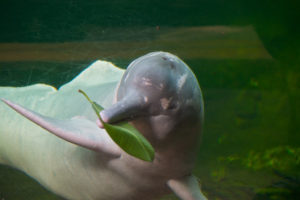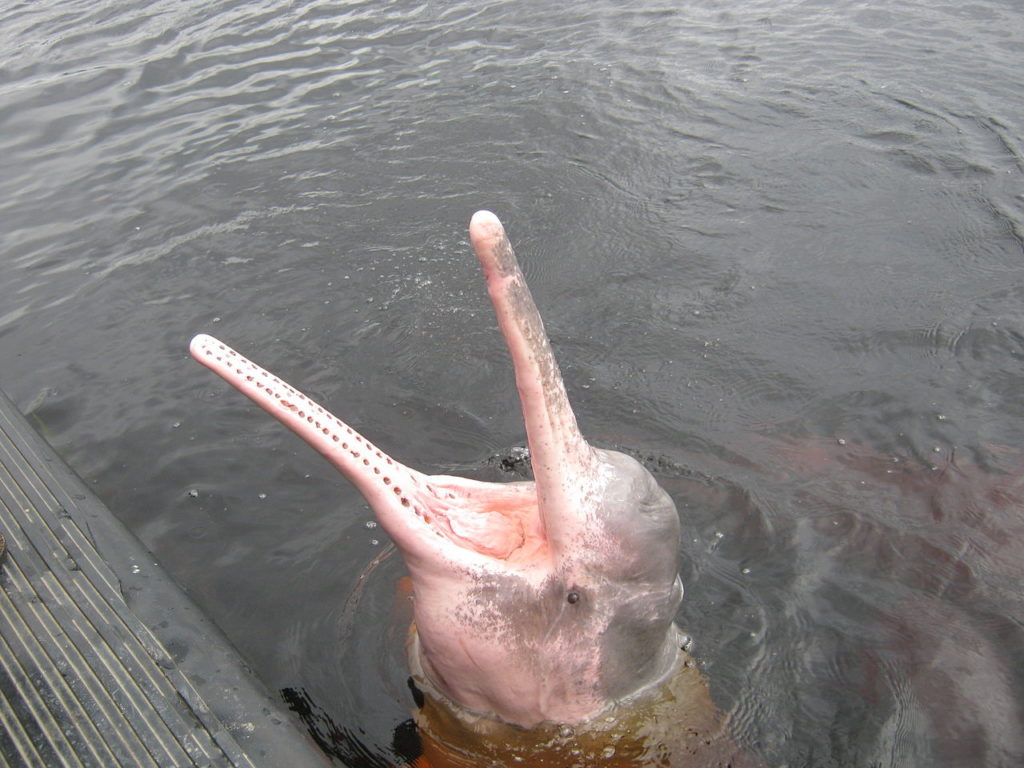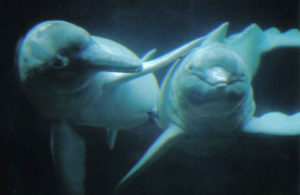The Amazon river dolphin (Inia geoffrensis), also known as the boto, bufeo, or pink river dolphin, is a species of toothed whale which is native to and is exclusive of South America and classified in the family Iniidae.

Adults acquire a pink color, more prominent in males, giving it its nickname “pink river dolphin”. Sexual dimorphism is very evident, with males measuring 16% longer and weighing 55% more than females. Like other toothed whales, they have a melon, an organ that is used for biosonar. The dorsal fin, although short in height, is regarded as long, and the pectoral fins are also large. The fin size, unfused vertebrae, and relative size allow for improved maneuverability when navigating flooded forests and capturing prey.

The texture of the body is robust and strong but flexible. Unlike in oceanic dolphins, the cervical vertebrae are not fused, allowing the head to turn 90 degrees. The flukes are broad and triangular, and the dorsal fin, which is keel-shaped, is short in height but very long, extending from the middle of the body to the caudal region. The pectoral fins are large and paddle-shaped. The length of its fins allows the animal to perform a circular movement, allowing for exceptional maneuverability to swim through the flooded forest but decreasing its speed.

The life expectancy of the Amazon river dolphin in the wild is unknown, but in captivity, the longevity of healthy individuals has been recorded as between 10 and 30 years.
According to the Wikipedia















